- Author: Kathy Keatley Garvey

The new UC California Cooperative Extension apiculturist, Elina Lastro Niño, has moved it to her website now that Eric Mussen has retired. Mussen, now Extension apiculturist emeritus, wrote the newsletter from 1976 to 2014 and loaded it on his UC Davis Department of Entomology and Nematology website. The editions are now archived.
The new home? It's on the elninobeelab website.
It's available online for free, of course. The newsletter is published bimonthly: in February, April, June, August, October and December. Niño relates: "If you wish to have this newsletter sent directly to your email address, please follow the instructions below. Enter this URL into your browser: https://lists.ucdavis.edu/sympa/subscribe/ucdavisbeenews. When it opens, it should relate to subscribing to this newsletter. Enter your email address and then click submit. It is time to decide whether to continue your hard copy subscription. The mailed subscription rate is now $25 per year (six issues). If you'd still like to continue this subscription please send a check by April 10, 2015 payable to the UC Regents and mailed to Elina L. Niño at the address in the signature block. Be sure to include your name and mailing address. If the check is not received you will not receive the next issue of the newsletter as a hard copy. This, of course, does not apply to those who have already prepaid for a certain time period."
In the newest edition, published today, you'll learn about how to treat those nasty Varroa mites, known far and wide (except in Australia, which doesn't have them) as beekeepers' Public Enemy No. 1.
Niño writes about HopGuard® II, "basically an 'old' product developed by BetaTec Hop Products, Inc., but it has an improved delivery system."
You'll also learn
- what Niño said when she addressed the the Avocado Pollination Seminar series
- that EPA is registering a new insecticide, flupyradifuron
- about exciting upcoming events, including a bee symposium, open house, and queen-rearing workshops, and
- some great information about how honey bees collect nectar.
How honey bees collect nectar is her Kids' Corner feature. "Usually after about three weeks of life as a house bee, all healthy honey bees in a normal, healthy colony become foragers," she writes. "They start every morning by going out into the world looking for the best sources of sugary nectar and protein-rich pollen. Some of them even collect water. Now, I'm sure you've seen these friendly ladies just buzzing along visiting flowers in your back yard. By the way, just a reminder, forager bees will not attack unless they feel threatened so just make sure you don't bother them and you should be fine (and tell your friends too!). "
Niño goes on to explain the process, and points out, as Mussen emphasizes, that honey is "not actually bee vomit as it never goes through a digestion (breakdown) process in the digestive tract of a honey bee." (Mussen officially retired in June 2014 after 38-years of service, but he continues to maintain an office in Briggs Hall and assists wherever he can, including writing a few articles for the newsletter.)
Niño, who joined the UC Davis Department of Entomology and Nematology on Sept. 1, 2014 from Pennsylvania State University—2600 miles away--is as busy as the proverbial worker bee.
“California is a good place to bee,” she told us recently. “I just wish I could have brought some of that Pennsylvania rain with me to help out California's drought."
Niño operates her field lab at Harry H. Laidlaw Jr. Honey Bee Research Facility on Bee Biology Road, west of the central campus, and at her lab in Briggs Hall, on the central campus. Her aims: to conduct practical, problem-solving research projects; to support the state's beekeepers through research, extension and outreach; and to address beekeeper and industry concerns.
The mission of her program is "to provide support to California beekeepers and other relevant stakeholders through research, extension and outreach." Niño studies honey bee biology, health, reproduction, pollination biology, insect ecology, evolution, genomics and chemical ecology.
Check out her lab's website at http://elninobeelab.ucdavis.edu/; and her Facebook page at https://www.facebook.com/elninolab. Her email is so easy to remember: elnino@ucdavis.edu.
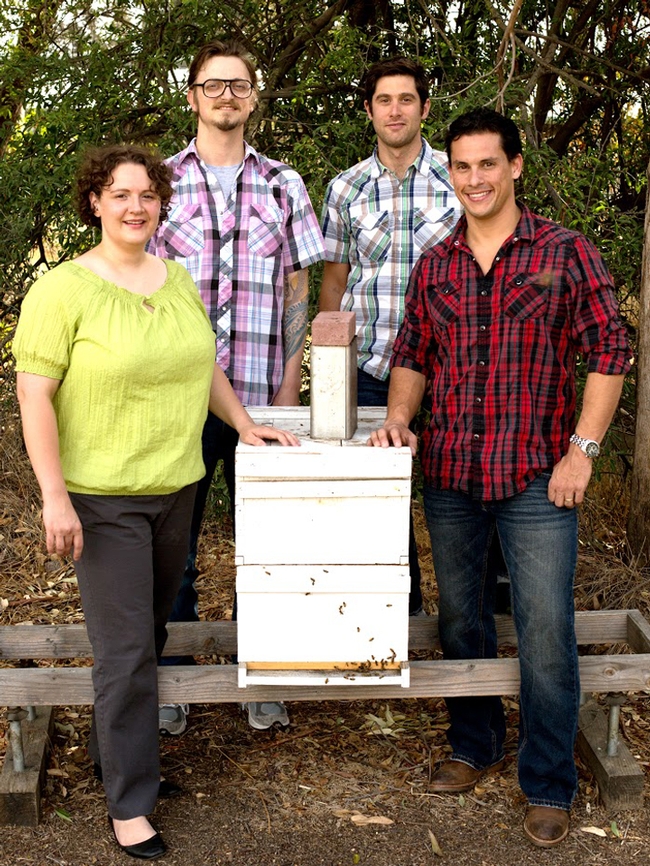
- Author: Kathy Keatley Garvey
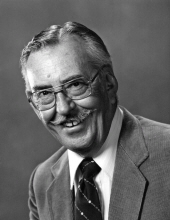
He passed Jan. 22, 2015. A celebration of life will take place at 2 p.m. Sunday, March 1, at the University Retirement Community at 1515 Shasta Drive, Davis.
Characterized as having a wonderful sense of humor, an always-ready smile and quick wit, Vern Burton was also an avid golfer. That's why a “Putt One for Vern” contest will be included in the reception festivities.
Vern was born in Omaha, Neb., on June 3, 1924, the only child of John and Vesta Burton. He spent his childhood in several states: Nebraska, Minnesota and Illinois before his father, in the tire business, moved his family to Los Angeles in 1939.
In July 1943, young Vern was inducted into the U.S. Army and sent to Camp Adair, Ore., to a new wartime infantry division – the 70th Infantry “Trailblazer” Division. Burton would later say that his three years in the Army proved to be “a great educational experience and quite an adventure for someone just out of high school." He landed in Marseille, France on Dec. 15, “the day the Germans launched the Battle of the Bulge. “I went overseas as a squad leader (Battle of the Bulge) and came back as a platoon sergeant." He received his honorable discharge in April 1946.
It was while he was completing basic training in the Willamette Valley, Oregon, that he met his future wife, Charlotte McKnight. They were married for more than 66 years. The couple raised two daughters, who in turn gave them four granddaughters.
Young Vern earned a bachelor's degree in entomology from UC Berkeley and a master's from LSU. He retired from his entomological career in December 1988.
Back in the fall of 2009, we interviewed Vern Burton for a feature story. He was 85 then and residing in the University Retirement Community.
We wrote:
"Vern Burton didn't set out to become an entomologist.
"Home from the World War II battlefields, he enrolled in Compton Community College and then the University of California, Berkeley.
"A family friend promised him a job in his termite control business once he finished his studies.
"His college associates, however, couldn't envision 'Vern and termites' in the same sentence.
"Neither could he."
Burton told us during the interview: "There were better things to do in life than crawling under a house looking for termites."
So began a 38-year career that would encompass 10 years as a Kern County Farm Adviser and 28 years as an Extension entomologist affiliated with the UC Davis Department of Entomology. During his career, Burton worked with crops such as alfalfa, beans, cotton, potatoes, small grains and sugar beets and helped resolve pest problems through integrated pest management (IPM) strategies and close associations with university researchers.
Burton enjoyed working with researchers like noted alfalfa seed expert Oscar Bacon, now a retired professor and former chair of the UC Davis Department of Entomology. “I'd help identity problems in the field and take them back to the researchers” he told us. "I always enjoyed helping people in ag and urban settings with their insect problems,” Burton said, “or their perceived problems.”
Tuber worms in potatoes? Check. Lygus bugs in seed alfalfa? Check. Spider mites on dry beans? Check. Nematodes in cotton? Check. Green peach aphids in sugar beets? Check. Burton helped recommend the guidelines in several of the Statewide IPM Program's commodity manuals. His collaborative research also appears in California Agriculture and other publications.
When Burton retired in December 1988, then Cong. Vic Fazio lauded him for his outstanding contributions to California agriculture, particularly in the field of IPM. In remarks entered into the congressional record on Jan 4, 1989, Fazio said that Burton “contributed greatly to California agriculture and to the University of California's mission for excellence in agricultural research, education and public service.”
“Mr. Burton's outstanding contributions include the development of innovative methods and strategies for nematode control in cotton, which have improved production while reducing pesticide use. He also aided in the development and establishment of treatment thresholds for green peach aphid on sugar beets and established and supervised the cotton pest management program in the San Joaquin Valley in the 1970s. That work resulted in the appropriation of permanent federal funds for an integrated pest management program.”
"Other successes included more effective and efficient control of lygus bugs and spider mites on dry beans, development of a successful pest management program on Burbank potatoes, and investigations on an aphid believed to be a serious insect pest on small grains. Mr. Burton helped prove that the aphid actually had no significant impact on grain yields and thereby insecticide use was markedly reduced.”
Fazio noted that over the years, Burton “has provided support and guidance to county programs conducted by Farm Advisors through field test pilot activities, recommendations, and suggestions for problem solutions, and printed information and participation in educational programs. He has also helped disseminate education and informative entomological information to a diverse clientele in agricultural and urban areas throughout the state.”
"Vern was dedicated to California growers, and worked tirelessly to provide new and useful information to them," IPM specialist Frank Zalom, professor of entomology at UC Davis, told us. "He understood the research-extension continuum better than most people ever could, having served the university as an extension entomologist in the county and also here on campus.”
Also active in entomological organizations, Burton served as president and secretary-treasurer of the Northern California Entomology Club and as secretary-treasurer of the Pacific Branch of the Entomological Society of America.
Burton and his wife, a retired 20-year accountant with the UC Davis Viticulture and Enology Department, moved into the University Retirement Community, Davis, in 2004.
In his early retirement years, he served as a lieutenant governor in 1992-93 of Division 7, Kiwanis International; worked four years in the UC Davis Medical Center gift shop and helped with the Kiwanis Family House at the Med Center. He traveled with his family, played golf and fished.
A favorite activity since childhood was “to get up early and go fishing in the morning and fry it for breakfast the same day.”
Emeritus Extension Apiculturist Eric Mussen, who joined the UC Davis Department of Entomology faculty in 1976 and retired in 2014, remembers Vern as a “dedicated scientist with a terrific sense of humor.” They shared office space with two other scientists on the third floor of Briggs Hall.
Vern claimed that bees would always single him out for special attention, Mussen said.
“Whenever I'd watch a honey bee demonstration in alfalfa and clover fields (which bees pollinate), honey bees would find me and deposit their stinger," Burton told us. "I'd stay out of the fields if they just moved in the honey bees.”
At age 85, Vern was enjoying retirement: spending time with his wife, reading mysteries, using his computer (“I used to be scared to death of computers and since my retirement, I've become friends with it”), playing computer card games (bridge, poker and hearts) and watching occasional sports on TV, especially professional golf and football (he played football in high school) and college baseball and basketball.
Burton was preceded in death by his wife, Charlotte Burton. He is survived by his daughters Maryn Mason (Bill) and Anice Isaacs (Bob); and granddaughters Kimberly Mason, Audra Anderson (Kory), Rebecca Mason, Ashley Nolan (Bowie).
In lieu of flowers, the family requests remembrances to the Bohart Museum of Entomology, UC Davis Department of Entomology and Nematology, UC Davis, 1 Shields Ave., Davis, CA 95616; the Kiwanis Family House, 2875 50th St., Sacramento, CA 95817; or The University Retirement Community Foundation, 1515 Shasta Drive, Davis, CA 95616.
Remembrances can be posted on the online guestbook at http://www.wiscombefuneral.com/

- Author: Kathy Keatley Garvey
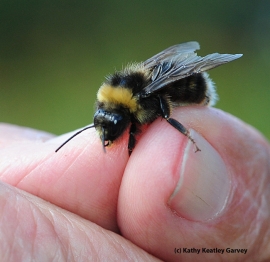
You may also have heard that during the two-hour program (free and open to the public), Thorp will share his extensive knowledge of bees and discuss their role as pollinators.
What you may not have heard is that Robbin Thorp is the newly selected recipient of the UC Davis Distinguished Emeritus Award, a high honor, indeed. And richly deserved.
Robbin Thorp, known as a tireless advocate of native bees, especially bumble bees, will be presented the award at a luncheon hosted next month by Chancellor Linda P.B. Katehi.
“Professor Thorp has had an outstanding professional career in the area of pollination ecology and systematics of honey and bumble bees,” said Lyn Lofland, president of the Executive Committee of the UC Davis Emeriti Association. “He has continued his professional contributions since he retired publishing both scientific papers and books. He has continued to teach and guide graduate students providing them with the benefit of his vast experience and knowledge. He also provides expert taxonomic services, identifying thousands of native bee specimens. He has coupled this effort with training numerous field assistants. Professor Thorp matched perfectly with the criteria established for the Distinguished Emeriti Award."
Thorp said it's a great honor to be named a distinguished emeritus. "It is an extra pleasure to be recognized for doing what I love and enjoy."
Thorp, who joined the UC Davis entomology faculty in 1964 and achieved emeritus status in 1994, is a state, national and global authority on pollination ecology, ecology and systematics of honey bees, bumble bees, vernal pool bees, conservation of bees, contribution of native bees to crop pollination, and bees of urban gardens and agricultural landscapes.
Since his retirement, he has compiled an exemplary record for his research, teaching, publications, presentations, and advisement services, sharing his expertise with local, statewide, national and international audiences. In his retirement, he has published 68 papers and is the first author on 15 publications. He received several prestigious awards: the 2013 outstanding team award, with several colleagues, from the Pacific Branch of the Entomological Society of America, and the 2010-2011 Edward A. Dickson Emeriti Professorship, UC Davis. Thorp is the North American regional co-chair for the International Union for Conservation of Nature (IUCN) Bumblebee Specialist group. He is a member of 10 professional societies, including the International Society of Hymenopterists.
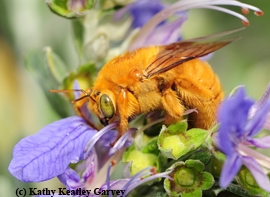
Thorp chaired the Jepson Prairie Advisory Committee at UC Davis from 1992-2011 (which includes seven years after his retirement). He is still active as a docent leading tours during the tour season. He is also involved in training new docents by providing information on the native bees that pollinate vernal pool flowers.
Thorp spends much of his time in the Bohart Museum of Entomology, which houses collections critical to his bee identification work. He identifies species and regularly volunteers at the open houses and other event.
Thorp is an integral part of The Bee Course, an annual 10-day workshop sponsored by the American Museum of Natural History and held at the Southwestern Field Station near Portal, Ariz. He has taught there since 2002 (the instructors are all volunteers), and even though he is 81 years young, he plans to continue teaching there.
In an email conversation, colleague James Cane of the USDA-ARS Pollinating Insect Research Unit, Utah State University, Logan, said it well: “Dr. Robbin Thorp should be the first scientist to be cloned, so valuable and broadly integrated are his knowledge about bees and pollination. No one else I know has his combination of skills; normally several people would be needed. Thus, he is a taxonomist of several genera of bees, a competent pollination biologist studying both native bees and honey bees in both natural and agricultural realms (with research experience in several crops), and a conservation advocate for bees. Moreover, I have watched his considerable teaching skills while helping in The Bee Course over the years. There I also get to see what a model human being Robbin is: thoughtful, considerate, a great listener, playful, polite unpretentious, all traits that the students gravitate toward. I have looked to Robbin as a role model for over 30 years, listen carefully to what he has to say, and always look forward to being in his presence. UC Davis is very lucky indeed to have attracted and retained such a fabulous faculty member.”
Colleague Claire Kremen of UC Berkeley credits Thorp with not only identifying more than 100,000 bees for her research since his retirement in 1994, but helping her with research protocol and helping her graduate students identify bees. “Dr. Thorp has contributed in three main ways. First, he has provided expert input into the design of protocols for the research, including assays for pollinator effectiveness, developing citizen science methods, rearing experimental bumble bee colonies, monitoring bumble bee colony properties in the field, and developing pollinator survey methods. Second, he has provided expert taxonomic services, including personally identifying over 100,000 native bee specimens that we have collected during this work, and working with us to develop a bee traits database. Third, he has trained numerous field assistants and graduate students from my lab in different aspects of bee biology. He's spent long hours with many of my graduate students helping them learn to identify bees. He also helped us develop methods and information sheets for teaching field and lab teams to recognize key generic and family characters for identifying bees in the field and sorting them in the lab. He's advised many of my graduate students on different aspects of their work.”
Said Lynn Kimsey, director of the Bohart Museum of Entomology and professor of entomology at UC Davis: “I have to say that Robbin has been phenomenal. He is more active in research and outreach every year. Regardless of what task is presented to him he is engaged and brings all his experience and knowledge to bear. I don't know many line faculty who are as active in their fields as Robbin is as a retiree. He is always available for museum events and loves to work with the public, particularly kids. I don't know of many pollination ecologists or bee systematists with his level of knowledge.”
Entomologist Katharina Ullmann, who received her doctorate in 2014 from UC Davis, says that Robbin Thorp is “one of the few people in North America who can identify bees down to the species level. As a result he's in high demand and has identified thousands of specimens for numerous lab groups since his retirement. However, he doesn't just identify the specimens. Instead, he's willing to patiently work through dichotomous keys with you so that you can learn those skills. His ongoing monitoring projects, work as an IUCN specialist, and recent books on bumble bee identification and guide to the bees of California show his commitment to the broader impacts of his research.”
Around the UC Davis campus, Thorp is known as a tireless advocate for pollinator education and outreach. He is often called upon by the Bohart Museum of Entomology and the Häagen-Dazs Honey Bee Garden (both part of the UC Davis Department of Entomology and Nematology), the UC Davis Arboretum and the California Center for Urban Horticulture to participate in their public outreach forums and events.
He spends countless hours connecting people of all ages to the world of insects, especially the pollinators like bumble bees. One of his research projects is monitoring the native bee activity in our department's bee garden, Häagen-Dazs Honey Bee Garden, work that he has done since 2008. In addition, he frequently presents talks at UC Davis and afield, to diverse audiences including UC Master Gardeners, beekeeper groups, and schoolchildren.
Thorp, who calls Michigan his home state, received both his bachelor's degree and master's degree in zoology from the University of Michigan. He received his doctorate in entomology from UC Berkeley in 1964.
Previous recipients of the distinguished award:
2014: Tom Cahill, professor emeritus, physics
2013: Eldredge Moores, professor emeritus, geology
2012: Alex McCall, professor emeritus and former dean, College of Agricultural and Environmental Sciences
2011: Charles Hess, professor emeritus and dean emeritus, College of Agricultural and Environmental Sciences
2008: M. Wayne Thiebaud, emeritus professor, art
Congratulations, Robbin Thorp! Scientist, researcher, author, professor, teacher, and a longtime public advocate for the bees!
P. S. Can we clone him now, as Jim Cane suggested?
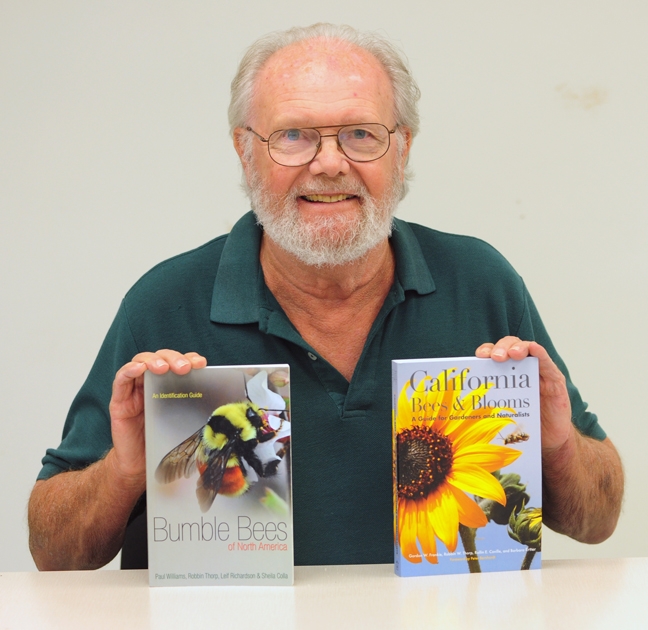
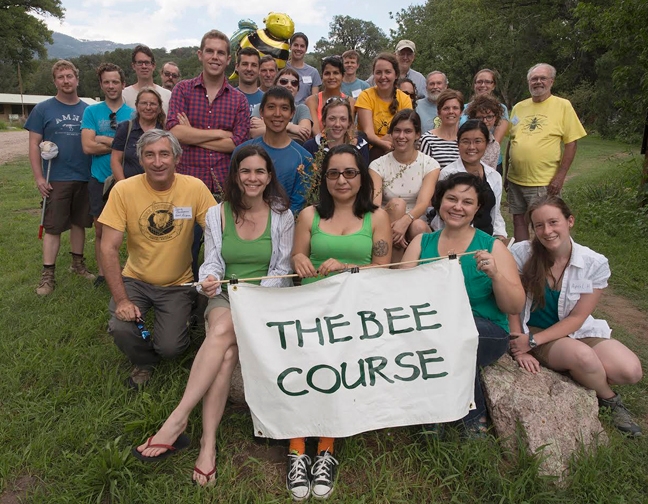

- Author: Kathy Keatley Garvey

It's all the buzz.
Graduate student Danny Klittich won the UC Davis Entomology Graduate Student Association's annual t-shirt design contest with a design depicting a honey bee and the iconic hexagonal cells.
Klittich, who is starting his third year as a doctoral student in the UC Davis Department of Entomology and Nematology, studies with major professor Michael Parrella, professor and chair of the department.
The T-shirt, publicly available for purchase, with proceeds benefitting EGSA, is golden yellow with a black illustration. Graduate student and T-shirt project coordinator Margaret “Rei” Scampavia is taking orders at m.rei.scampavia@gmail.com. Sizes range from youth small to adult double X.
Klittich says he's not an artist but has always had an interest in honey bees. He was a member of the UC Davis graduate student team that won the student debate championship, Nov. 18, at the Entomological Society of America's 62nd annual meeting in Portland, Ore. The team debated neonicotinoids, defeating Auburn (Alabama) University team. UC Davis successfully argued the con side of “Neonicotinoids Are Causing the Death of Bees Essential for Pollinating our Food Crops. The Use of Neonicotinoids Should End.” The team, captained by Mohammad-Amir Aghaee of the Larry Godfrey lab, also included Jenny Carlson, Anthony Cornel lab; Ralph Washington Jr., Steve Nadler lab; and Margaret "Rei" Scampavia, Neal Williams/Edwin Lewis lab.
Klittich's research focuses on increasing plant resistance to herbivorous and improving integrated pest management (IPM) programs in horticulture and floriculture. He is currently analyzing the effects of silicate fertilizers on leafmining pests in chrysanthemum and gerbera production systems.
Klittich, from Fillmore, is a graduate of Fillmore High School and valedictorian of the Class of 2006. He grew up in the nursery business, working at his family's nursery, Otto and Sons Nursery, Inc., Fillmore. During his youth he was active in 4-H and Boy Scouts, achieving the rank of Eagle Scout.
Klittich received his bachelor degree in entomology from UC Davis in 2010. Following his graduation, he worked in the Parrella laboratory, helping to maintain the greenhouses and experimental plants and assisting with pesticide efficacy trials on several crops and pests including spider mites, leafminer and mealbugs. He enrolled in the doctorate program in 2012 and continues his work in the Parrella lab.
The current president of EGSA, Klittich is active in the Pacific Branch of ESA (PBESA) and ESA, the national organization. He was a member of the UC Davis championship team that won the ESA student debate in 2013. The subject: “Using GMOs to Using GMO's to Technology is Not Universally Accepted – Con side."
Klittich plans to receive his doctorate in 2016. His career goal: to pursue a career in pesticide and IPM research either in the private sector or in the California University System as a farm advisor.
In addition to the honey bee t-shirt, EGSA is offering other T-shirts, most available for $15. Popular EGSA shirts depict a dung beetle, “They See Me Rollin'”; a “cuddling moth” for infants and toddlers; a weevil shirt, “See No Weevil, Hear No Weevil, Speak No Weevil”; and “The Beetles” shirt, of four beetles crossing Abbey Road, reminiscent of The Beatles pictured on their Abbey Road album. All can be ordered from Margaret “Rei” Scampavia at m.rei.scampavia@gmail.com.

- Author: Kathy Keatley Garvey

It's a 14-letter word but many people consider it a four-letter word.
Wikipedia defines it as a "a class of neuro-active insecticides chemically similar to nicotine...In the late 2000s some neonicotinoids came under increasing scrutiny over their environmental impacts. The use of neonicotinoids was linked in a range of studies to adverse ecological effects, including honey-bee colony collapse disorder (CCD) and loss of birds due to a reduction in insect populations. Several countries restricted or banned the use of certain neonicotinoids."
"In the U.S., neonicotinoids are currently used on about 95 percent of corn and canola crops, the majority of cotton, sorghum, and sugar beets, and about half of all soybeans," according to Wikipedia. "They are also used on the vast majority of fruit and vegetable crops, including apples, cherries, peaches, oranges, berries, leafy greens, tomatoes, and potatoes. Neonicotinoids are also applied to cereal grains, rice, nuts, and wine grapes. Imidacloprid is effective against sucking insects, some chewing insects, soil insects and is also used to control fleas on domestic animals. It is possibly the most widely used insecticide, both within the neonicotinoids and in the worldwide market."
Neonics, as they're called, will be front center stage in Portland, Ore. at the Entomological Society of America's student debates on Tuesday, Nov. 18. It's the 62nd annual ESA meeting. Distinguished professor Frank Zalom, an integrated pest management specialist in the UC Davis Department of Entomology, serves as president of the 7000-member organization.
Several different topics will be debated. For the debate on neonics, it will be UC Davis graduate students vs. graduate students from Auburn University, Alabama.
For months now, the graduate students have been reading the literature, talking to experts, and setting strategies.
We listened in on a practice debate Thursday night in the third-floor conference room of Briggs Hall, UC Davis Department of Entomology and Nematology. The team is captained by Mohammad-Amir Aghaee of the Larry Godfrey lab, and coached by Michael Parrella, professor and chair of the department. Other team members are Jenny Carlson, Anthony Cornel lab; Margaret "Rei" Scampavia, Neal Williams/Edwin Lewis lab; Ralph Washington Jr., Steve Nadler lab; and Daniel Klittich, Michael Parrella lab.
They scrutinized a PowerPoint, making sure every word was clear and exactly the one they wanted. They searched for more resources, pointing out which scientist published what significant paper and when and where. Extension apicuturist (retired) Eric Mussen of UC Davis was there to assist with his expertise on honey bees and pesticides.
We won't tell you what the strategies are--that would be a "spoiler." Suffice it to say that this controversial topic promises to be lively. The Auburn team, comprised of Olufemi Ajayi, Adekunle Adesanya, Julian Golec, Matt Burrows, Scott Clem and, Z. Ye and advised by David Held, will argue that neonicotinoids are causing the death of bees essential for pollinating our food crops, and will advocate that the use of neonicotinoids should end. UC Davis will take the opposing view.
The 2013 UC Davis team, also captained by Mohammad-Amir Aghaee, won the ESA championship. They hope for a repeat. They're good; they've won every match since 2011 except one.
Aghaee is deeply involved in ESA activities. A participant in the student debates and Linnean Games teams for four years, he also participates in the student 10-minute paper competitions, covering such topics as Lygus bug movements in bush beans, efficacy of Bacillus thuringiensis spp. galleriae against rice water weevil, and preliminary research on winter flooding effectiveness against rice water weevil. Last year he won first place for his winter flood presentation.
Aghaee, whose major professor is Extension entomologist Larry Godfrey, is a fifth year Ph.D. candidate working on rice water weevil (Lissorhoptrus oryzophilus) management in California rice. The majority of Aghaee's dissertation research is dedicated toward developing alternative management options for growers. “I have examined the use of Bacillus thuringiensis spp. galleriae as a biopesticide for rice water weevil and explored the mechanisms of winter flooding rice fields as a cultural control against weevil larvae," Aghaee related. "I am currently examining the possible role of silicon augmentation as a means of increasing rice tolerance to weevil damage and the potential threat of Brown marmorated stinkbug (Halyomorpha halys) to California rice."
A Renaissance kind of guy, Aghaee has secondary interests in post-Renaissance European history and contemporary Middle Eastern politics. He explores some of these themes in his freshman seminar titled "Bugs, Germs, and Steel: A History of Entomology in Warfare" where he and his colleagues teach students how basic scientific research and ecology has influenced human conflicts and technological progress. Outside of entomology, his leisure activities include oil painting, language acquisition, and culinary specialization in Persian and Indo-Pakistani cuisines.
Stay tuned for who won the debate and what they said. Their work will be published in the journal, American Entomologist.




